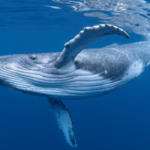Author
Vanderbilt Researchers Combine Paleontology and Fluid Physics to Uncover Ediacaran Nurseries
Dec. 21, 2021—Knowing how life worked on Earth 550 million years ago can give perspective on how life could evolve on other planets. Geobiologist and Assistant Professor of Earth and Environmental Sciences Simon Darroch and postdoctoral researcher Brandt Gibson are working to figure that out. “At the broadest scale, understanding how, when, and why complex life evolved on this planet gives...
Imaging Technology Shows how Whales’ Sensory Systems have Evolved
Dec. 19, 2021—If you’ve ever had an ear infection that made you dizzy or unbalanced, the infection likely was affecting your vestibular complex—part of the intricate system of hard and soft tissues that make up the inner ear. Knowledge of this structure has been made possible through computed tomography scans—imaging technology that continues to shape our understanding...
Cohen Innovation Fund Supporting Two High-Risk, High-Reward Projects
Nov. 5, 2021—By Aaron Conley Houra Merrikh, professor of biochemistry, and Teru Nakagawa, associate professor of molecular physiology and biophysics, have both been selected to receive one-year research awards from the Stanley Cohen Innovation Fund. The awards will support groundbreaking and paradigm-shifting research, including Merrikh’s study of the molecular drivers of evolution that enables cancer to develop resistance to...
Fossil records help us understand the present and predict future ecosystems
Nov. 5, 2021—By Miquéla Thornton Due to a multitude of human-driven impacts, the Earth is experiencing a biodiversity crisis. It has been referred to as the Sixth Mass Extinction, and scientists are examining similar events in the planet’s geological past looking for clues in ancient ecosystems to help us solve present-day issues. Current events have produced dramatic changes in...
Darwin’s Magnificient Mystery and the Microbiome
Nov. 4, 2021—Darwin’s On the Origin of Species put forth a seminal and revolutionary thesis for the life sciences in 1859: Populations with a common ancestor evolve over time with enough change to become different species that no longer successfully interbreed. This process of descent with modification continues over time to produce lineages of new species. Darwin famously referred to the process of one species becoming two...




